Our orchards cover just over one hectare of land and have been created and planted over several generations. Over-aged and diseased trees are replaced with “old” apple varieties in the same place.
Selected Fruits - taste and origin
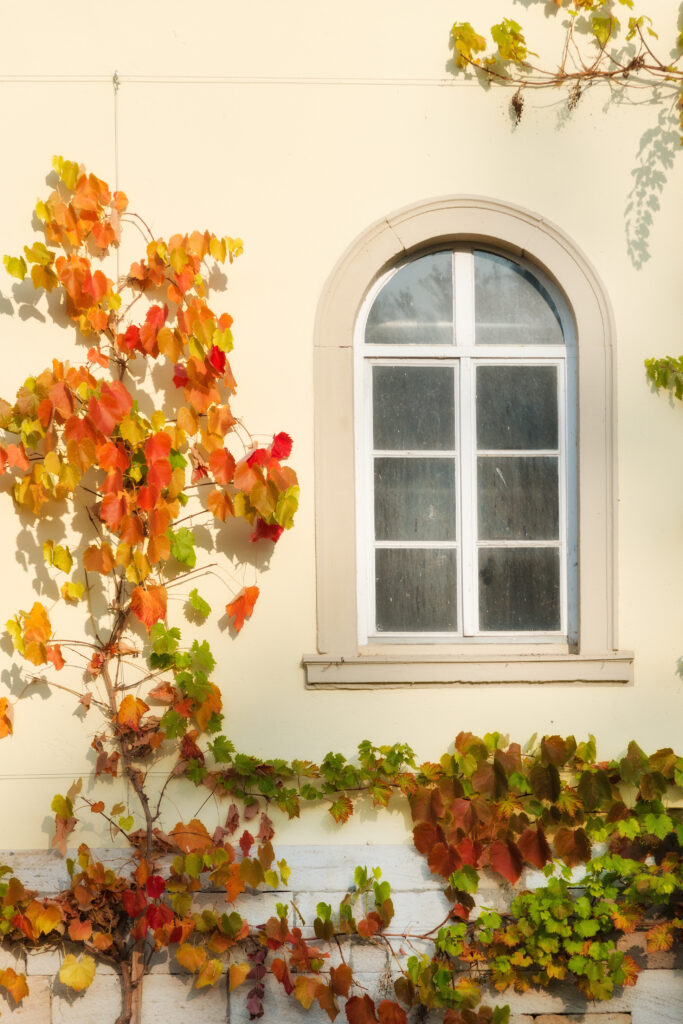
Most of the orchard consists of different varieties of apple trees. The apple trees at Fürstenhof in particular are a relic of the former fruit culture in the Staatsbad and have been proven to have existed in their current planting arrangement on the lower terrace and on the two driveways to Fürstenhof since 1924.
Old postcards from 1904 show that large fruit trees can already be seen on the lower terrace of the castle garden. The planting of fruit trees on the terrace dates back to before 1900.
Well-known apple varieties such as “Jakob Fischer” but also very old apple varieties such as the “Goldenrenette von Blenheim”, which was found around 1740 in Woodstock, Oxfordshire near Blenheim Castle.
Over-aged and diseased trees are replaced with “old” apple varieties in the same place. (apple flyer)
Artfully cut pear trellises along the coach house also underline the long fruit culture in the Staatsbad. The juicy and sweet variety “Conference” is one of the most popular pear varieties in Europe.
In addition to apple and pear trees, there are also quinces, figs, medlars and grape vines on the historic grounds of the Staatsbad.
All the fruits we grow are either used personally by the chef or are available for our guests to try in the guest information.
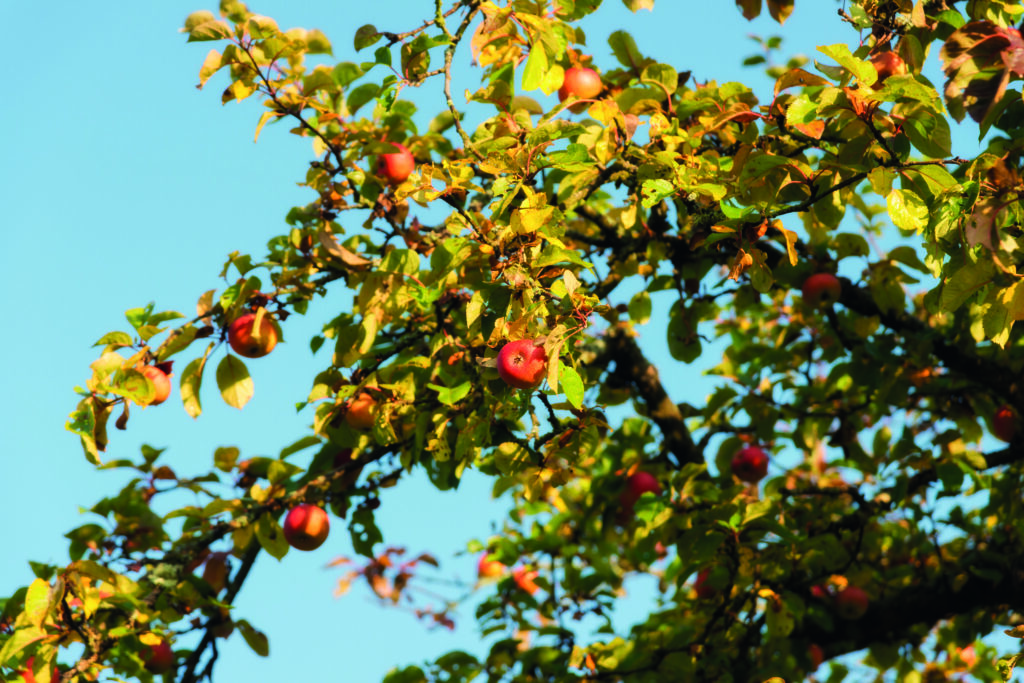
The Malus domestica ‘Danziger Kantapfel‘ is an autumn apple and has long been known under a variety of variety names in Holland and Germany. With its very attractive, large pink flowers – and due to the low frost sensitivity of the flowers and wood, it is a very valuable fruit tree.
Origin: The first mentions of this variety have been known on Rügen since 1703. Further information indicates that it was once very common in France, Holland and Germany. Further information about it is unclear because, as mentioned, it was known very early on under a variety of variety names/synonyms (Swabian Rose Apple, Red Apollo Apple, Rabiner, Red Cardinal, etc.).
Location: The variety prefers a sunny to partially shaded location with permeable to normal, nutrient-rich soil. The soil should be fresh. The location in the Staatsbad is on the left side of the right-hand driveway to the Fürstenhof.
Use: The ripeness for consumption is from September to November. The cloudy to bright red, also crimson-washed apple has a juicy, sweet to sweet and sour taste. The fruits are ready to eat immediately after harvest and are suitable for domestic processing.
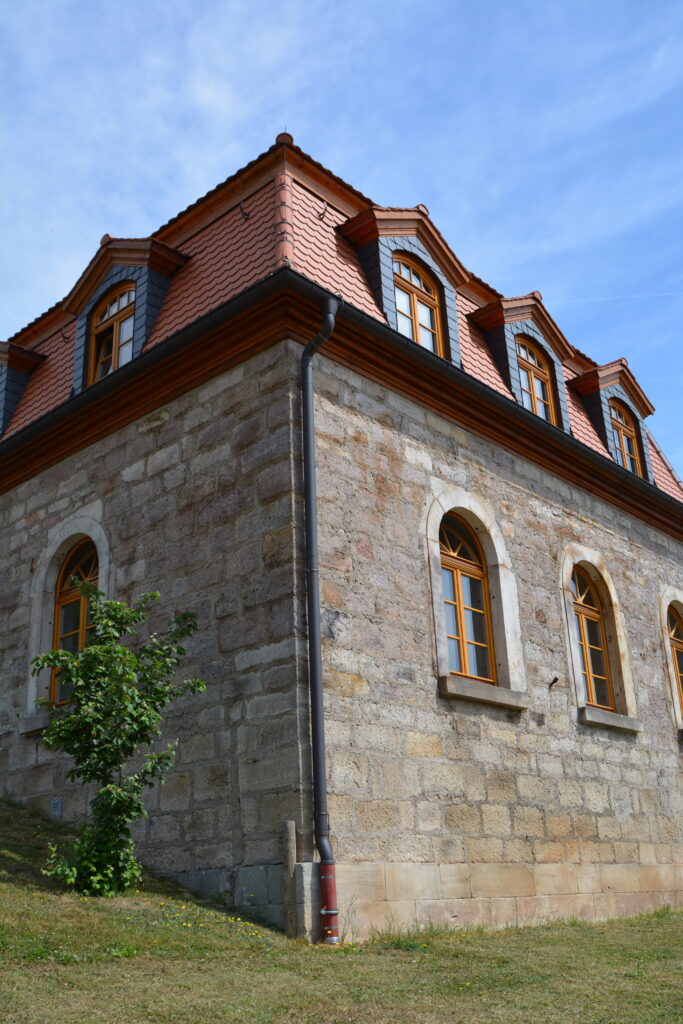
The Malus domestica winter apple ‘Kaiser Wilhelm‘ was originally known under the variety name ‘Peter Broich’. It was not until 1864 that she became known nationally under the name “Kaiser Wilhelm”.
Origin: The refined variety has been cultivated as ‘Peter Broich’ in a garden in the Rhineland since 1830. It was named after a Rhineland pastor. It was only with the taste test in 1875 by Kaiser Wilhelm that the variety received its current name.
Location: The variety requires a sunny to partially shaded location with humus-rich, fresh and nutrient-rich soil and good ventilation. The location in the Staatsbad is right at the beginning of the right-hand driveway to the Fürstenhof.
Use: The ripeness for consumption is from November to March. The medium-sized to large fruits are usually dark red to cloudy blood red, sometimes purple-reddish in color. The proportion of top color can vary greatly. It was grown as a dessert apple. But it is also easy to use for domestic processing. The taste is sour-sweet, without a pronounced aroma, juicy at first, soon becoming crumbly after long storage.
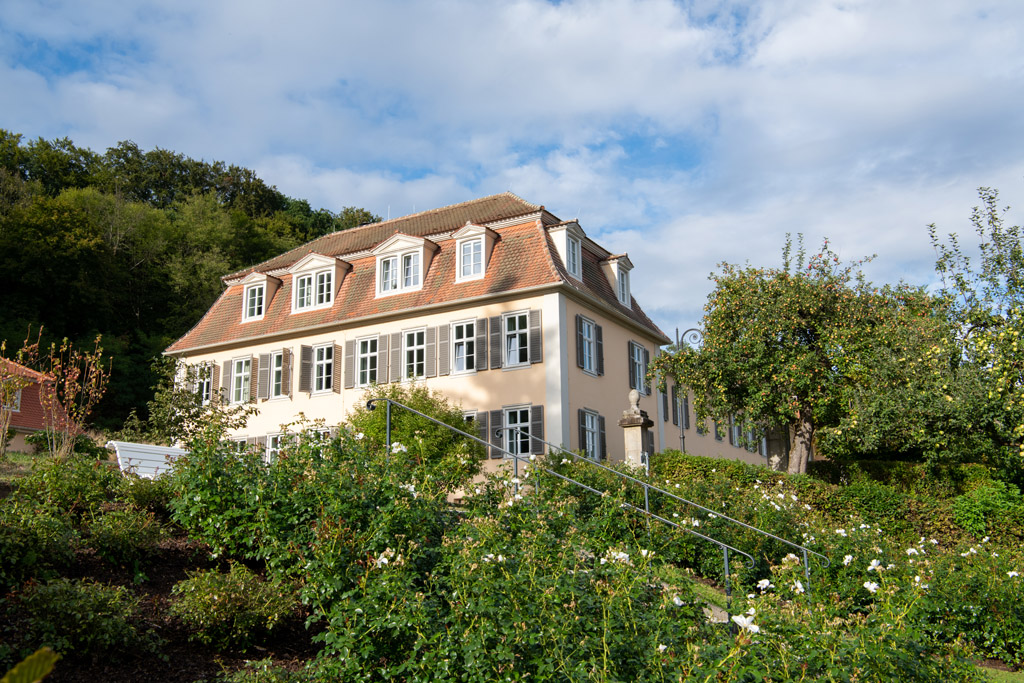
The Malus domestica ‘Goldenrenette von Blenheim‘ was grown primarily for its taste and is considered a possible father of the variety ‘Cox Orange’.
Origin: The variety was found around 1740 in Woodstock, near Blenheim Castle. Initially only planted locally, the variety became more widespread from 1818 onwards.
Location: The variety requires a sunny location with nutrient-rich soil and good ventilation. The location in the Staatsbad is on the left driveway to the Fürstenhof.
Use: The ripeness for consumption is from November to February. The yellow-green to reddish-yellow colored fruit is usually yellow-red to cloudy reddish-purple on the sunny side. The taste is harmoniously sweet and mildly sour. The variety is well suited for fresh consumption and home processing. It retains a comparatively high amount of structure when cooked.
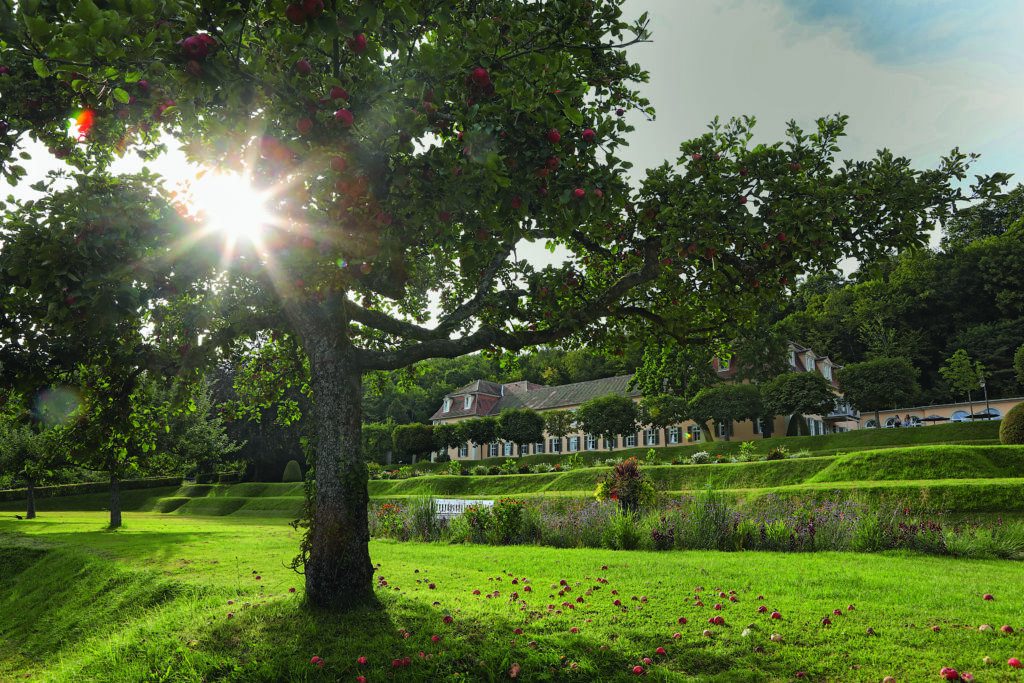
The Malus domestica ‘Goldparmäne‘ is an upright and wide-growing tree with a height of 3 to 4 m. Its light pink flowers begin in April.
Origin: The Goldparmäne is one of the oldest apple varieties. It was probably created in Normandy around 1510.
Location: Prefers a sunny to partially shaded location. The location in the Staatsbad is on the lower terrace of the Fürstenhof.
Use: Ready for consumption from October to January. Its yellow-red fruits can be used as table fruit, for baking, cooking or as juice. The gold parma has a crisp, firm flesh and tastes nutty and sweet and sour.

The Pyrus communis ‘Conference‘ is a special variety because it tends to parthenocarpy (fruit development without fertilization and seed formation in the pear) and therefore sets fruit even without cross-pollination.
Origin: The pear variety was introduced at the end of the 19th century by the English breeder Thomas Francis Rivers and has become the most popular variety in Europe to this day. It owes its variety name to a conference in England in 1885. At this conference, over 600 pear varieties were introduced to promote pear growing in England. This tasty and high-yielding variety caught the eye.
Location: Pears prefer a sunny to semi-shady location and are very suitable for espalier planting on house walls because of their deep roots. The soil should be loose and clayey.
Use: The approximately 10 cm large, green-yellow fruits are ready to pick from September and ready to eat from October. The pulp is melting, fine, sweet with a pleasant spice. That’s why pears are also very suitable as table fruit.
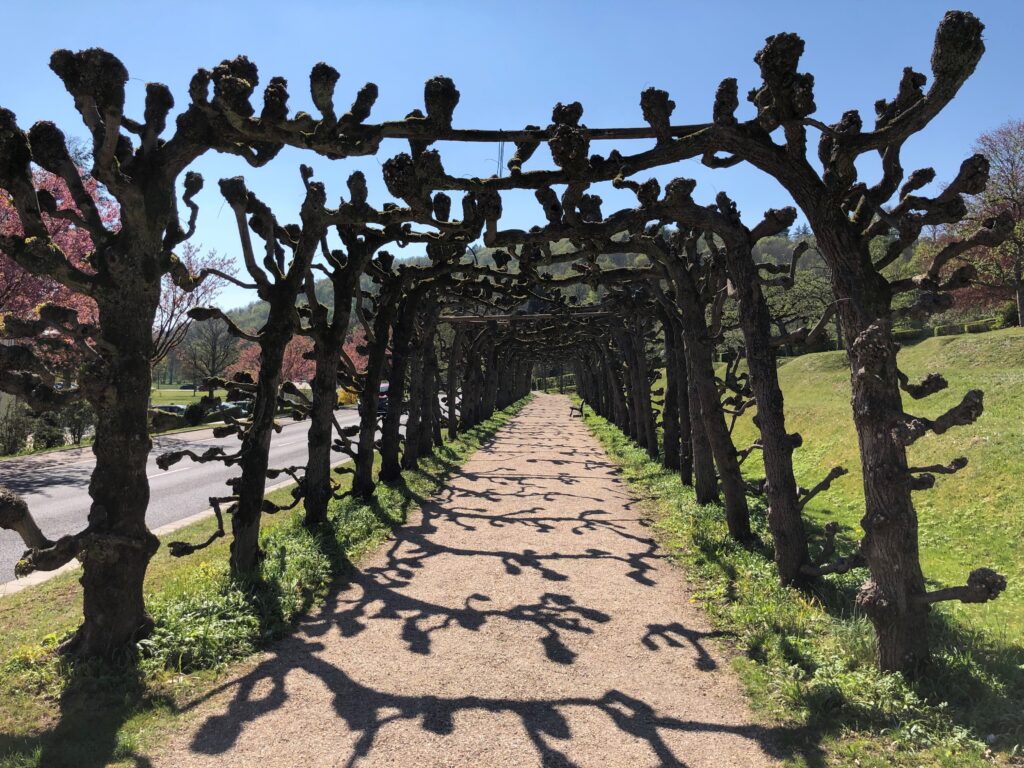
The Cydonia oblonga ‘Konstantinople‘ apple quince is a variety that is very well suited to less warm locations. Just right for the rough Rhön location. Like the apple, it belongs to the rose family (rosacea).
Origin: The quince probably came to Europe from the Near East via the Greeks and later the Romans. It has been cultivated since the early Middle Ages, particularly in the wine-growing regions of Central Europe.
Location: The quince prefers a warm and sunny location. If the lime content in the soil is too high, the quince rootstock reacts sensitively. Quince grows in all acidic to neutral, sandy to medium-drained soils. They cannot tolerate waterlogging.
Uses: The fruits of the quince are boiled, stewed, steamed or baked for consumption. Quinces have a delicately sour, slightly bitter citrus aroma. You can make jam, compote, puree, chutney or jelly from them. But also liqueur, wine and schnapps.
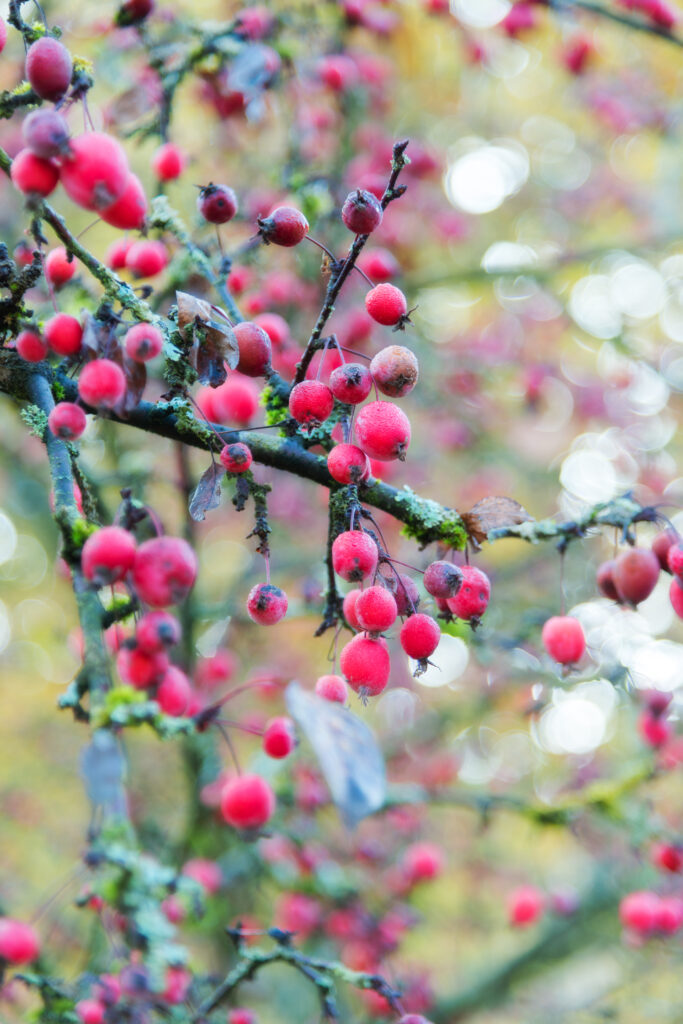
The Mespilus germanica ‘Real Medlar‘ is a rather rare fruit tree and can only be found in a few gardens. It grows into a tree or shrub-like oval, spreading crown.
Origin: The loquat was originally distributed in the Middle East and was brought to Western and Central Europe by the Romans.
Location: The medlar belongs to the rose family and prefers a sunny, warm and protected location. The soil should be moderately dry to fresh and not too nutrient-poor. Loamy, deep and well-drained soils with a high lime content are ideal.
Use: The fruits are edible and can be made into jam, puree or fruit wine. The fruits should be harvested after the first frosts so that they become softer and more aromatic.
Do you have any questions, are you planning a visit or are you interested in one of our offers?
Don´t hesitate to contact us.




